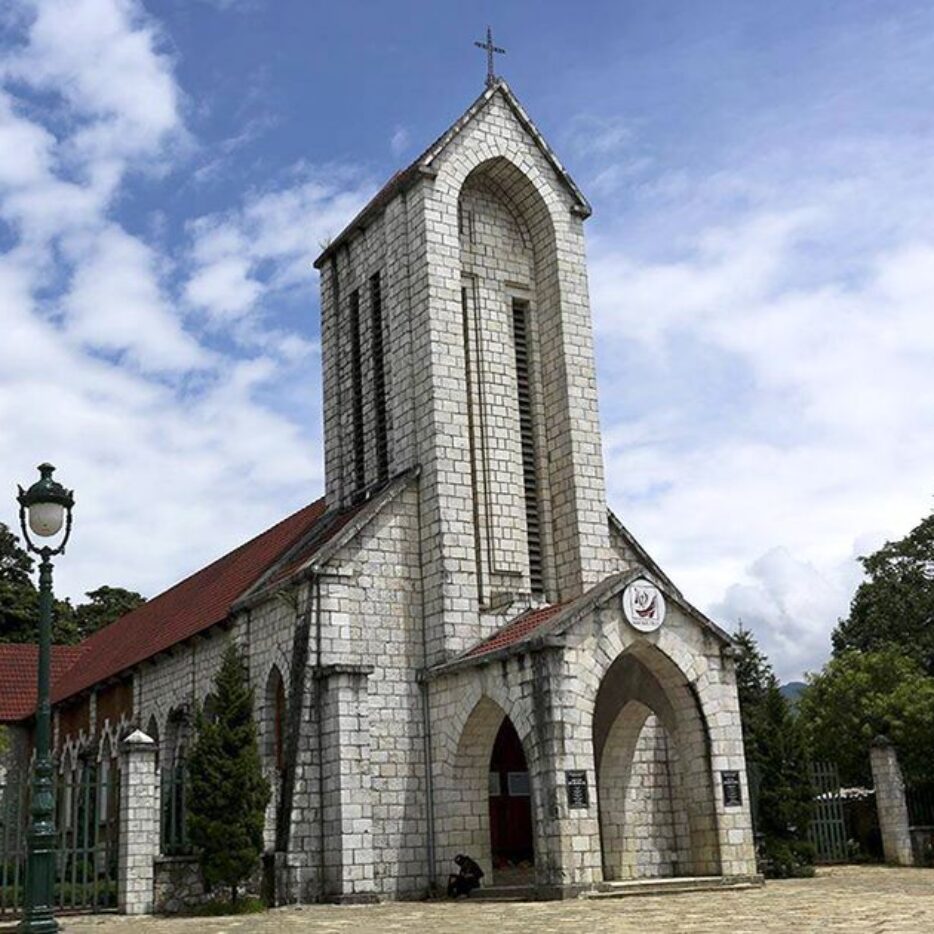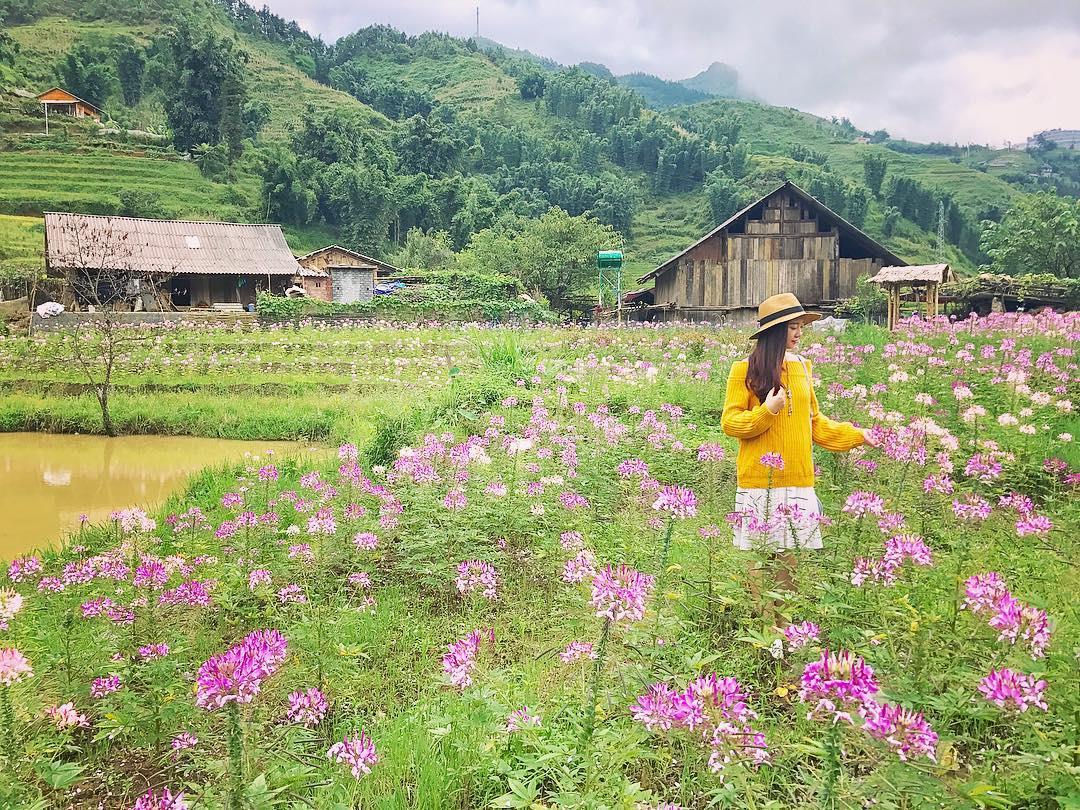Sapa is a small town nestled in the northwest region of Vietnam, surrounded by lush green mountains and rice terraces. It is home to several ethnic minority groups, including the H’mong, Dao, Tay, and Giay, each with their unique customs, traditions, and dialects. Sapa’s natural beauty, diverse culture, and friendly locals make it an attractive destination for travelers seeking an authentic experience in Vietnam.
History of Sapa

Sapa has a rich history that dates back more than a century. It was initially established as a French hill station in the early 1900s, a place where the French colonialists could escape the heat and enjoy the cooler climate of the mountains. During this time, the French built many of the town’s iconic buildings, such as the Notre Dame Cathedral and the Town Hall.
In the 1950s, Sapa became a base for the Viet Minh during the First Indochina War. After the war ended, Sapa remained relatively isolated until the late 1990s when the Vietnamese government began promoting tourism in the area.
Today, Sapa is one of Vietnam’s top tourist destinations, attracting visitors from all over the world.
Geography of Sapa

Sapa is situated in the Hoang Lien Son mountain range, which is part of the Himalayas. It is surrounded by towering mountains, some of which are over 3,000 meters high. The town itself is located at an altitude of around 1,600 meters above sea level, which gives it a pleasant climate all year round.
Sapa is also home to several natural attractions, including the Muong Hoa Valley, Silver Waterfall, and Fansipan Mountain, the highest peak in Indochina. The town is also famous for its rice terraces, which are some of the most beautiful in Vietnam.
Culture and Ethnicity of Sapa
Sapa is home to several ethnic minority groups, each with their unique customs, traditions, and dialects. The H’mong are the largest ethnic group in Sapa, followed by the Dao, Tay, and Giay.
The people of Sapa are known for their handicrafts, particularly their intricate embroidery work. They also have a rich culinary culture, with many traditional dishes that are unique to the area.
Visitors to Sapa can learn about the local culture by participating in homestays with local families, attending cultural festivals, or visiting local markets.
Tourism in Sapa

Tourism is a significant source of income for Sapa, with thousands of visitors coming to the town each year. There are several tour operators in Sapa that offer a range of activities, including trekking, cycling, and cultural tours.
One of the most popular attractions in Sapa is the Fansipan Cable Car, which takes visitors to the top of Fansipan Mountain. The cable car offers stunning views of the surrounding mountains and valleys and is a must-see for anyone visiting Sapa.
Sapa also has several museums that provide insight into the town’s history and culture, such as the Sapa Museum and the H’mong Cultural Museum.
Things to Do in Sapa

There are plenty of things to do in Sapa, from exploring the town’s natural beauty to learning about its rich cultural heritage. Here are some of the top things to do in Sapa:
- Trekking: Sapa is famous for its trekking routes, which take visitors throughthe town’s stunning rice terraces and mountainous landscapes. There are several trekking routes available, ranging from easy walks to more challenging hikes that require a higher level of fitness.
- Homestays: Visitors can experience the local culture firsthand by staying with local families in their homes. This provides an excellent opportunity to learn about the traditional customs, cuisine, and way of life of the ethnic minority groups in Sapa.
- Markets: Sapa has several markets, such as the Bac Ha Market and the Can Cau Market, where visitors can buy traditional handicrafts, clothing, and fresh produce.
- Fansipan Mountain: The highest peak in Indochina is located in Sapa and is accessible via the Fansipan Cable Car. Visitors can enjoy stunning views of the surrounding mountains and valleys from the top.
- Waterfalls: Sapa has several waterfalls that are worth visiting, including the Silver Waterfall and
Festivals and Events in Sapa

Sapa hosts several festivals and events throughout the year that showcase the town’s unique culture and traditions. These include:
- Sapa Cultural Tourism Week: This week-long event takes place in late April and features cultural performances, food stalls, and handicraft exhibitions.
- Cat Cat Village Festival: This festival takes place in June and celebrates the culture and traditions of the H’mong people.
- Love Market: This market takes place on Saturday evenings in Sapa and is a place where young people from ethnic minority groups meet and socialize.
- Bac Ha Market: This colorful market takes place on Sundays and is held in Bac Ha town, which is about 70 kilometers from Sapa. Visitors can buy traditional handicrafts, fresh produce, and livestock.
Accommodation in Sapa

Sapa has several accommodation options, ranging from budget guesthouses to luxury hotels. Many of the hotels and guesthouses are located in or near the town center and offer stunning views of the surrounding mountains and valleys.
For a more authentic experience, visitors can opt for a homestay with a local family. Homestays provide an opportunity to learn about the local culture firsthand and experience the traditional way of life in Sapa.
Food and Drink in Sapa

Sapa has a rich culinary culture that is influenced by the town’s diverse ethnic groups. Some of the most popular dishes in Sapa include:
- Thang Co: A traditional soup made with horse meat, organs, and bones.
- Banh Cuon: Steamed rice rolls filled with minced pork and mushrooms.
- Xoi: Sticky rice served with various toppings, such as peanuts, sesame seeds, and green beans.
- Grilled meat: Sapa is known for its grilled meats, which are marinated in spices and often served with rice or noodles.
Sapa also has several cafes and bars where visitors can relax and enjoy a drink while taking in the stunning views of the surrounding mountains and valleys.

Sapa is located about 380 kilometers northwest of Hanoi and is accessible via several modes of transportation. The most convenient way to get to Sapa is by train, which takes around eight hours from Hanoi to Lao Cai, the nearest city to Sapa. From Lao Cai, visitors can take a shuttle bus or taxi to Sapa, which is about 40 kilometers away.
Another option is to hire a private car or motorcycle and drive toSapa. The journey takes around five to six hours from Hanoi and offers stunning views of the countryside.
There are also several tour operators in Hanoi that offer day trips and multi-day tours to Sapa, which include transportation, accommodation, and activities.
Conclusion
Sapa is a unique destination in Vietnam that offers visitors an opportunity to experience the country’s natural beauty, rich cultural heritage, and friendly locals. From trekking through rice terraces to staying with local families in homestays, there is something for everyone in Sapa. Whether you’re a nature lover, culture enthusiast, or adventure seeker, Sapa is a must-visit destination in Vietnam.






















